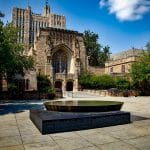Great Barrier Reef: Fabulous Shapes and Colors From Another World
by Nabewise

The Great Barrier Reef off the Eastern coast of Australia, is so large that it comprises twenty percent of the world’s undersea reefs. With more than 400 species of coral and 1500 known varieties of tropical fish, this is a unique environment.
Off the eastern coast of Australia lies what is probably one of the most amazing marine ecosystems on earth. The balance is so precarious that the whole system is constantly under threat from both natural and man made disasters.
The Great Barrier Reef is under the protection of the World Heritage Scheme and it is an official national marine park. In biological and geological terms it is rightly designated one of the top natural wonders of the world. The Great Barrier Reef comprises about one fifth of the world’s entire coral reef area.
The reef is about 1250 miles long (about 2012km) and reaches from Lady Elliot Island to Cape York. The area is shallow, warm, coastal water and there is a unique diversity of marine life here. The whole reef is made up of coral polyps which live on top of the build up of skeletons of past generations of coral. These polyps are like tiny buds of coral which form a soft layer over the limestone base. The coral is actually soft bodied and surrounds itself with an exterior skeleton made of limestone.
Marine biologists calculate that the first corals inhabited this area more than 17 million years ago and it is incredible to think that today’s corals are living on top of the skeletal remains of their ancestors from millions of year before. The generations are literally layered on top of each other.
The coral, which supports the other wildlife on the reef, only thrives in unpolluted water and needs a constant temperature that stays around 72 to 82 degrees Fahrenheit.( This is equivalent to 22 to 28 degrees centigrade.) The coral lives on clean sea water and sunshine. It needs the sunlight to be able to reach it and to warm the water, and this is why it occurs where the water is relatively shallow.
The reef is home to more than four hundred known species of coral and these vary spectacularly in size, shape and colour. This habitat supports 1500 species of tropical fish, six of the seven species of sea turtle in the world, plus almost 300 varieties of birds including waders, sea birds and sea eagles.
Since the 1960’s tourist numbers in the reef area have risen sharply with a 30% increase per year for the past 20 years, and this has made it essential to protect the environment and control access to certain areas. The management of the area necessitates making many rules and regulations to prevent things like anchor damage to the reef, reef walking, coral collection, uncontrolled fishing and of course, pollution from boats, and the other detritus tourists tend to leave behind them.
The colours and the natural construction of this fabulous world are unbelievable and even if you don’t scuba dive, you can have the most amazing experience here via snorkelling, or setting out in a glass-bottomed boat. If you get the opportunity, this is one of the world’s, ‘must see’ places, but if not, the photographs shown in this article will give you a good idea of just what a fabulous job nature has done here.




